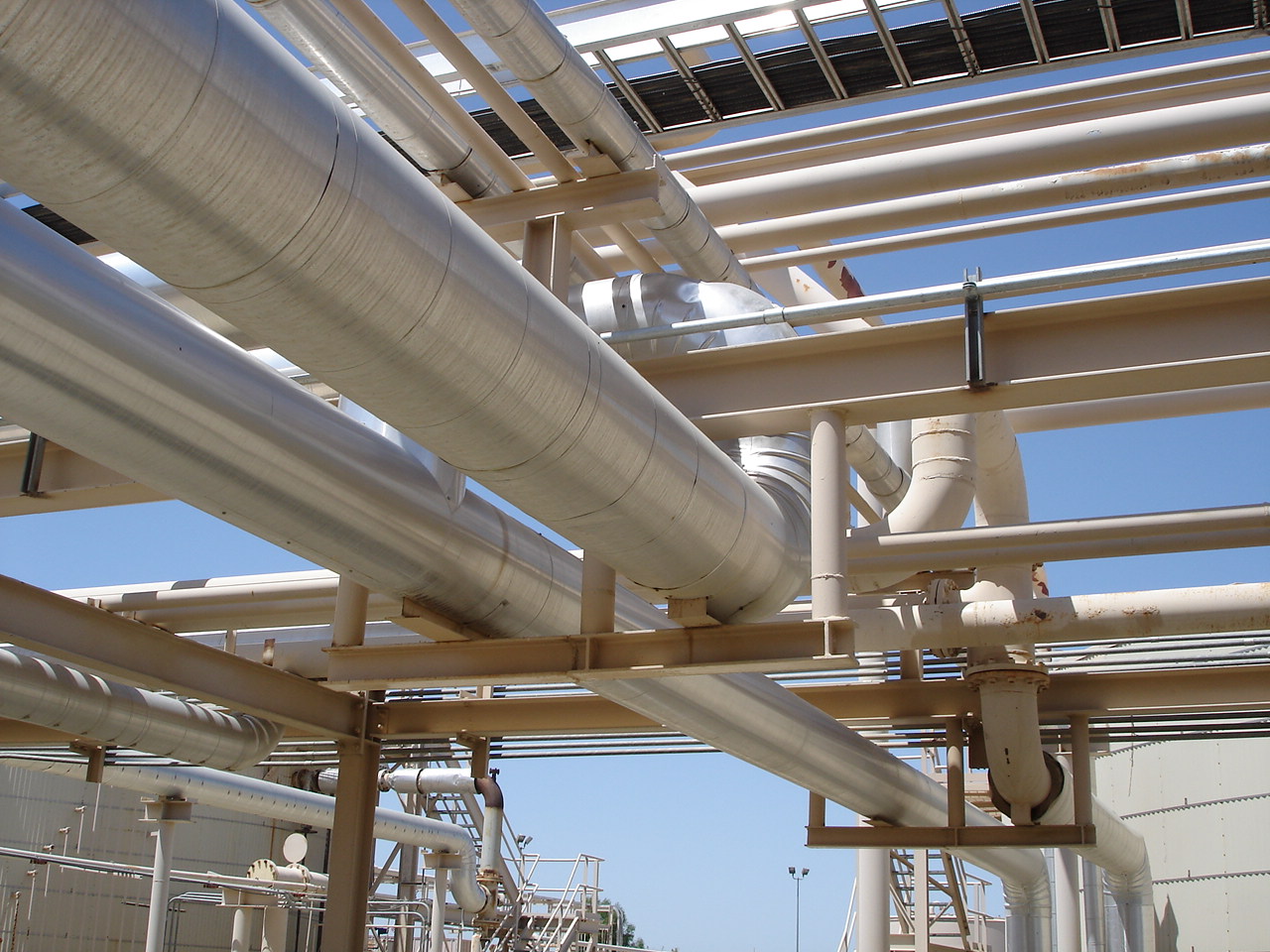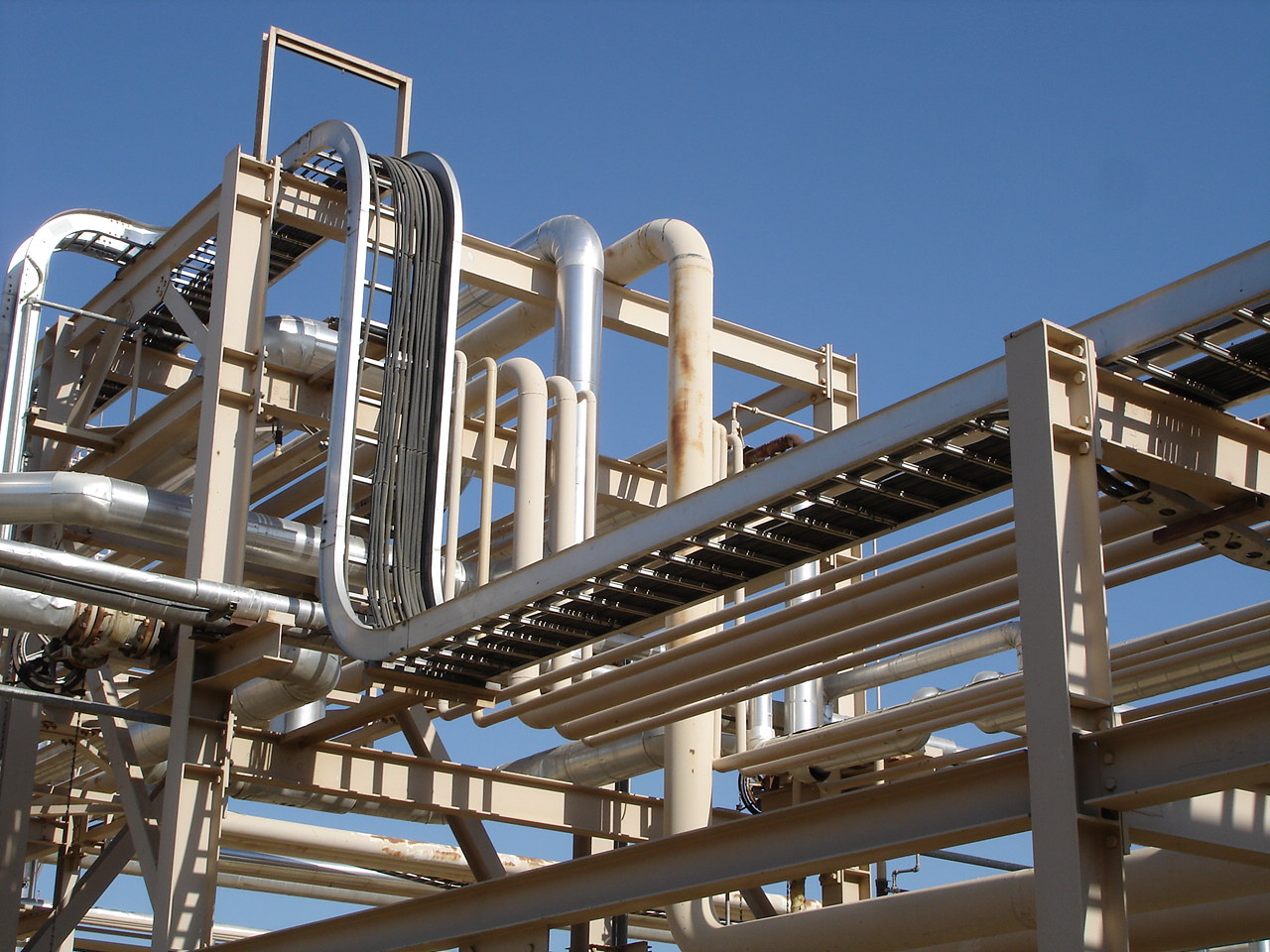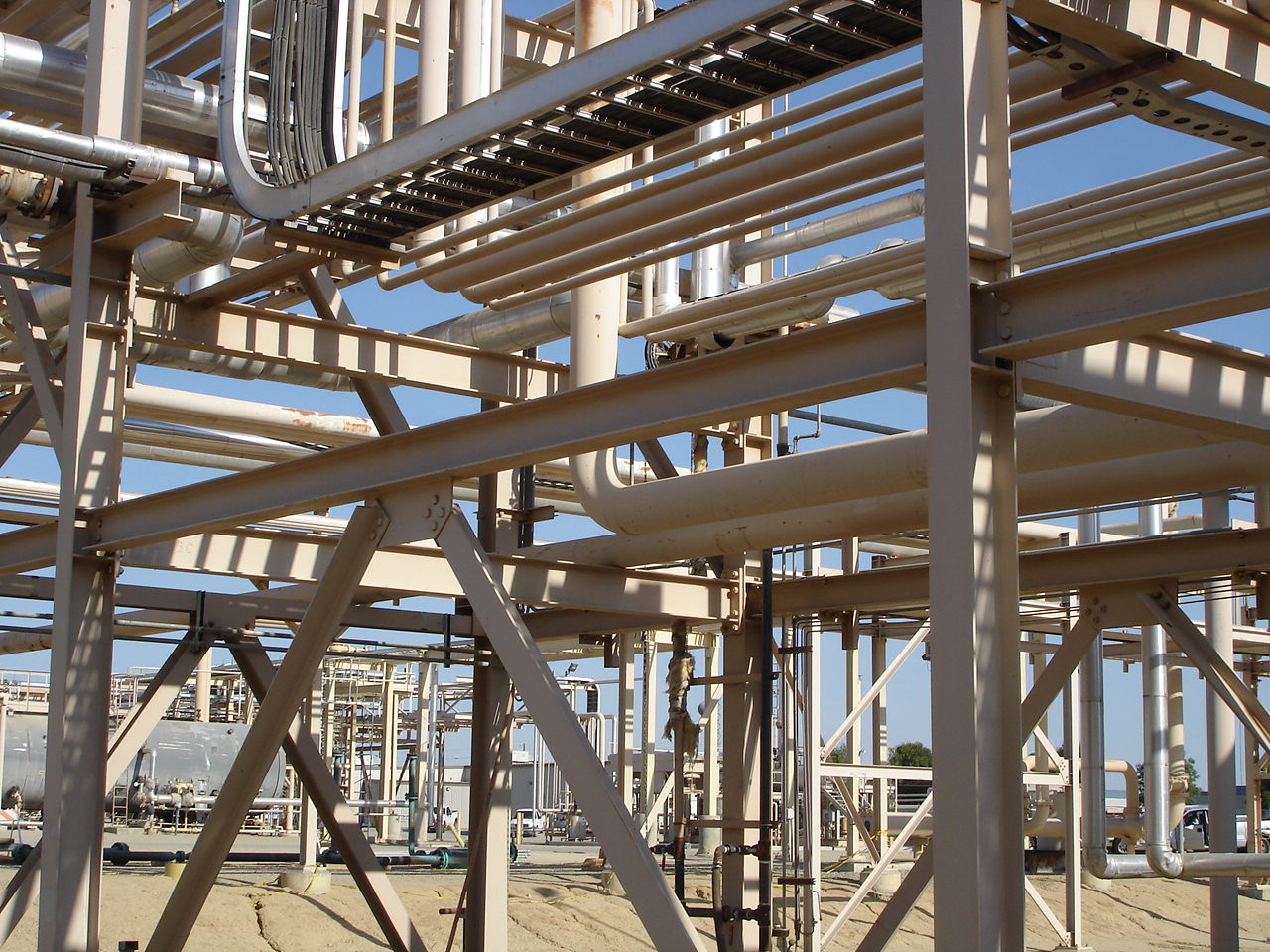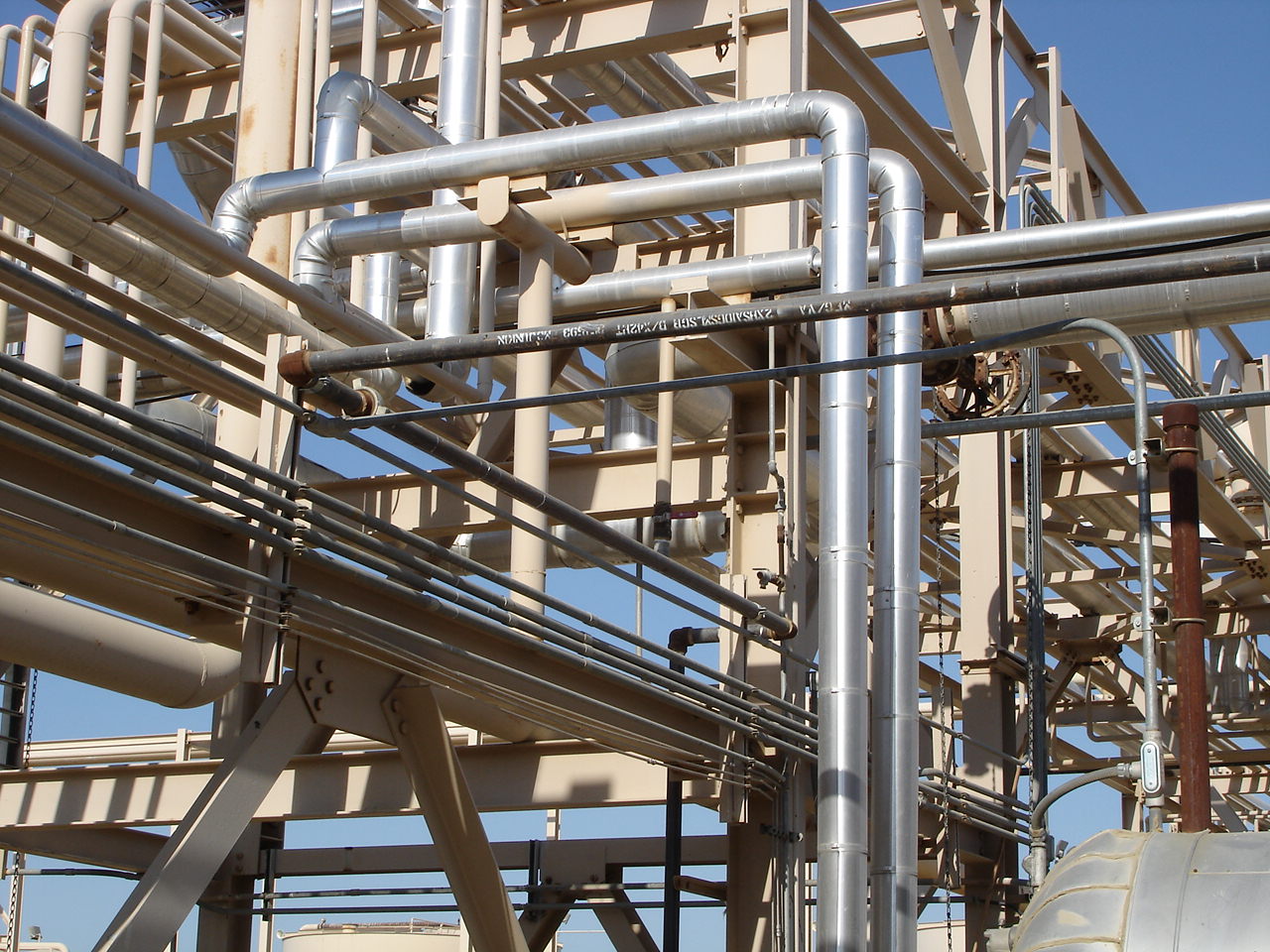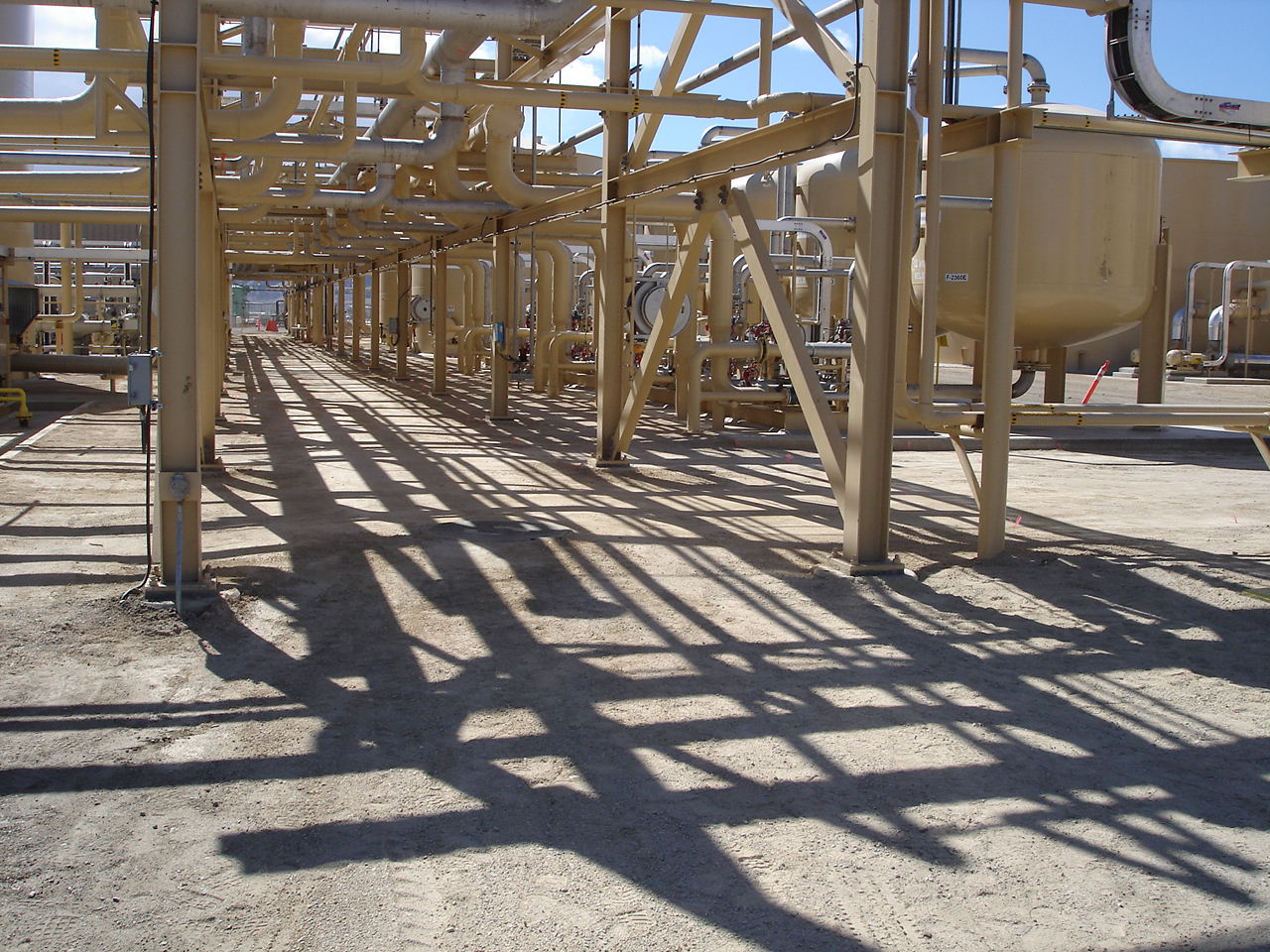Pipe Rack
A pipe rack is a structural framework used in industrial facilities, particularly in the oil, gas, petrochemical, and chemical industries. Its primary purpose is to support and elevate various pipelines, cables, and other utilities above ground level. Pipe racks are designed to provide efficient routing of pipes and cables, enabling easy maintenance, inspection, and access to equipment. Pipe racks are often constructed from steel or other sturdy materials to withstand the weight of the pipes and other components they support. They are typically arranged in parallel lines and can vary in height and configuration based on the specific needs of the facility.
- See Article - Pipe Support Dont's
Key Points about Pipe Racks
Pipe Routing - Pipe racks help organize the layout of pipelines, allowing for efficient routing of different process lines, such as those carrying fluids, gases, or other materials.
Maintenance Access - Elevating pipes off the ground provides easier access for maintenance and repair activities. This is particularly important in industries where regular inspections and maintenance are required.
Safety - By keeping pipes and cables elevated, pipe racks reduce the risk of damage from accidental impacts or environmental factors. They also help prevent trips and falls that could result from pipes lying on the ground.
Space Utilization - Pipe racks optimize the use of available space, especially in crowded industrial settings, by allowing multiple pipes to be stacked vertically.
Flexibility - The modular nature of pipe racks allows for easy expansion or modification of the piping system as the facility's needs change over time.
Heat Management - In industries where pipelines carry hot fluids or gases, pipe racks can be designed with insulation or heat shielding to prevent excessive heat transfer to nearby equipment or personnel.
Pipe racks are often a critical part of the overall infrastructure of industrial plants, and their design takes into account factors like load bearing capacity, seismic considerations, pipe support mechanisms, corrosion protection, and adherence to relevant codes and standards. Properly designed and maintained pipe racks contribute to the safe and efficient operation of industrial facilities.
Pipe Rack Height
Height is dictated by the minimum clearance required for the rack to function as intended. This sounds cryptic but a pipe rack serves many functions. In many field locations, the pipe rack is simply a mechanism to keep the pipes off the ground. If unprotected pipe is in contact with the soil, unwanted external corrosion can result. In this example, the design of the pipe rack should allow for stairs to traverse the piping where access is required.
If the pipe rack is in a facility, refinery or other location where there will be vehicular traffic, then the bottom of pipe elevation should be higher than the highest vehicle that passes under it. The height if a pipe rack can also be based on the minimum overhead clearance required under the lowest level of piping passing under the rack. This is typically 12' to 15', depending on your project's specifications. Imagine that a pipe rack runs North-South and there are laterals running East-West. Equipment requirements make the elevation of the lateral pipe rack exactly 12' above grade.
If the largest average line size is 12" NPS, then to transition from the E-W rack to the N-S rack, two 90 degree ells will be required. Each long radius ell has a height of 1.5 times the nominal diameter, so two 90s will have an elevation increase of 36". In this case, the E-W pipe rack height will be 12' from grade and the N-S pipe rack height will be 15' from grade.
Pipe Rack Width
There are several ways to determine the width of a pipe rack. This is usually done during the plot plan development by creating a piping transposition drawing from P&IDs and a preliminary equipment layout. A transposition drawing takes the lines from a well developed set of P&IDs and arranging them in a space which will become the pipe rack. See transposition drawing for more information. After determining the number of lines that will be in the rack, the designer needs to space the lines appropriately. This can be done by looking at our pipe datasheets for bare pipes or calculate it by using the method below:
- Get the outside diameter of the two pipes that are side by side. If there is insulation or a heat shield, include this as part of the outside diameter. If there are any flanges, use the outside diameter of the flanges.
- Obtain the minimum distance between the pipes. If space is a premium, use 2” spacing.
Pipe Rack Arrangement
After the pipe rack has been laid out, the designer will then look at congested areas and try to reduce the number of elbows and fittings. Each elbow, fitting and flange adds, at minimum, the cost of a weld. For large diameter pipe, reducing the number of welds translates to substantial costs during construction.
Pipe Support Spacing
The distance between supports is dictated by the size of the pipes, the product it is carrying, seismic constraints and codes and regulations. This is determined by a structural engineer. If there are any design requirements, such as an extra width to accommodate vehicles, it needs to be communicated to the engineer.
Pipe Rack Design Considerations
- If there is space available when making the design. USE it. It is a lot cheaper to install a wider rack now than have to add on to it in the future.
- If there are gas lines, avoid pockets where moisture can collect. If the line has to slope, consider sloping the pipe racks.
- Be sure to include enough vertical clearance for all expected traffic. This can be cranes, emergency vehicles, trucks, forklifts, etc.
- Consider future upgrades when designing the pipe rack. If a PLC is located beneath a rack, it may have to be removed one day. Be sure there is suitable space for this activity.
Pipe Rack Sizing Calculator
Do this for all the pipes on the rack. If there is space available, add 20% for future expansion. It is a lot cheaper to add extra space now rather than after the rack has been constructed.


